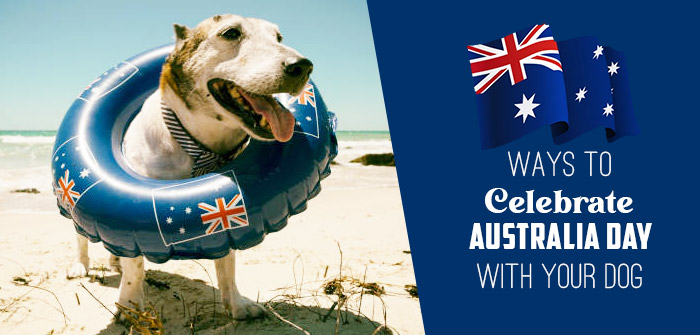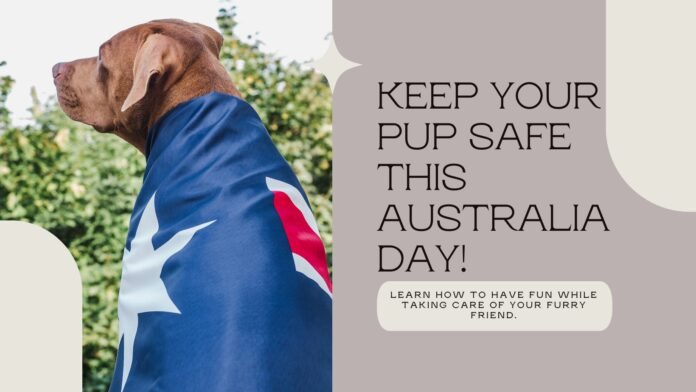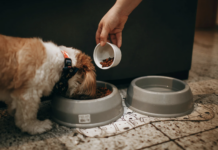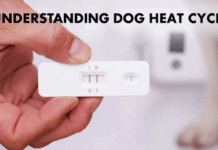Last Updated on January 15, 2024 by Dog Lover
Australia Day Fun, Dog-Style: A Guide to Keeping Your Pup Safe This Holiday
Picture it: sizzling sausages on the barbie, mates clinking frosty beers, and the air crackling with the festive spirit of Australia Day.
It’s a day for sun, celebration, and…well, maybe not for your furry friend. While we revel in the festivities, our canine companions can face a barrage of sensory overload – loud bangs, unfamiliar crowds, scorching temperatures, and tempting human treats.
So, how do we ensure our dog enjoys the day alongside us, tails wagging with carefree Aussie spirit, without a whimper of stress or a dash of danger?
Fear not, fellow dog-loving Aussies! This guide is your paw-fect companion to navigating Australia Day with your pooch in tow. We’ll dive into:
- Understanding your dog’s anxieties: Fireworks, barbecues, and boisterous crowds – oh my! Understanding how these elements might affect your dog is key to preventing meltdowns.
- Creating a safe haven: Your home transforms into your dog’s sanctuary during the cacophony. Learn how to make it a calming oasis for your furry friend.
- Tailoring your celebrations: From responsible barbecue etiquette to alternative activities, discover ways to include your dog in the merriment, minus the potential perils.
- Essential safety tips: Microchips, harnesses, and escape-proof fencing – we’ll cover the crucial precautions to keep your pup secure amidst the celebratory buzz.
Ready to ensure your four-legged mate experiences a truly paw-some Australia Day? Let’s embark on this journey together!

Understanding Your Dog’s Fireworks Phobia
For many dogs, Australia Day’s dazzling fireworks display translates to a symphony of terror. The loud booms, flashing lights, and unfamiliar smells can trigger anxiety, leading to:
- Pacing and panting
- Excessive barking or whining
- Trembling and hiding
- Destructive behavior
Remember, your dog doesn’t understand the celebratory intent behind the fireworks. It’s simply a barrage of overwhelming stimuli that can send them spiraling into fear.
Recognizing these signs is crucial for providing your furry friend with the comfort and support they need.
Creating a Calming Oasis
Your home becomes your dog’s fortress during the fireworks frenzy. Here’s how to transform it into a haven of tranquility:
- Soundproof with blankets and curtains: Minimize the intrusion of loud noises by closing windows and doors and draping windows with thick blankets.
- Familiarize with calming music: Soft classical music or nature sounds can drown out the jarring fireworks booms and create a sense of comfort for your dog.
- Provide a safe space: Create a cozy nook for your dog with their favorite bed, toys, and chew treats. This becomes their refuge when feeling overwhelmed.
- Distract with engaging activities: Play fetch indoors, offer interactive puzzle toys, or engage in quiet play to keep your dog’s mind occupied and away from the external noise.
Tailoring Your Celebrations
Australia Day festivities don’t have to exclude your furry friend! Here are some dog-friendly ways to celebrate:
- Morning adventures: Take your dog for a walk or beach trip before the heat and crowds intensify. Start the day with positive energy and exercise.
- Backyard fun: Organize a backyard BBQ for your dog-loving mates. Let your pups socialize in a familiar, controlled environment.
- Water games: Beat the heat with a splash! Set up a kiddie pool, sprinkler, or water hose for your dog to cool off and have fun.
- Alternative activities: Skip the fireworks viewing and opt for a quiet evening picnic in the park or a movie night snuggled with your canine companion.

Essential Safety Tips for a Paw-fect Day
Remember, even the most chilled-out dog can be unpredictable in a stimulating environment. Here are some essential safety tips:
- Microchip and ID tags: Ensure your dog is wearing a collar with ID tags and keep their microchip information updated. In case of a dash, you’ll be reunited quicker than a kangaroo hopping across the outback.
- Secure harnesses and leashes: Ditch the retractable leash for a secure harness and sturdy leash. You want maximum control to prevent any unexpected dashes towards fireworks or tempting BBQ smells.
- Escape-proof fencing: Double-check your backyard fencing for any potential gaps or vulnerabilities. Ensure your furry explorer can’t slip out and embark on an unauthorized adventure.
- Keep them hydrated: Australia Day often coincides with scorching temperatures. Provide ample fresh water throughout the day and avoid strenuous activities during peak heat hours.
- Avoid human treats: Resist the urge to share your BBQ delights with your pup. Many human foods, like onions, grapes, and chocolate, are toxic to dogs. Stick to their regular diet or dog-safe treats to avoid gastrointestinal upset.
Remember, you are your dog’s best advocate.
Pay close attention to their body language and behavior throughout the day. If they’re exhibiting signs of anxiety or distress, don’t force them into situations that exacerbate their fear.
Take them indoors, provide comfort, and adjust your plans accordingly.
Australia Day should be a joyful celebration for everyone, furry friends included. By understanding your dog’s needs, creating a safe space, and tailoring your festivities, you can ensure they experience a fun, stress-free day alongside you.
So raise a glass (of water, for your pup!), put on a dog-friendly tune, and let the paw-ty begin!
FAQs
My dog isn’t afraid of fireworks, can I ignore these precautions?
While some dogs handle fireworks better than others, it’s always best to be prepared. Even the calmest canine can be startled by a particularly loud boom or unexpected flash. Having a safe haven and ensuring their microchip information is up-to-date is crucial for any unexpected situations.
What dog-safe treats can I give my pup on Australia Day?
There are plenty of delicious and healthy options! Frozen bananas, apple slices, carrots, and even homemade dog biscuits are great alternatives to human food. Always consult your veterinarian if you’re unsure about a specific treat.
Can I take my dog to the fireworks display?
It’s generally not recommended. Large crowds, loud noises, and unpredictable surroundings can be overwhelming for most dogs. Opt for a quieter viewing spot away from the main display or stay home and provide a soothing environment for your furry friend.
What should I do if my dog runs away during the Australia Day festivities?
Stay calm and act quickly. Contact your local council or animal shelter immediately and report your dog missing. Having an updated microchip can significantly increase your chances of a swift reunion.
Where can I find more information on dog safety during Australia Day?
Several reputable organizations like the RSPCA and Animal Welfare League offer comprehensive resources and tips on keeping your dog safe during holidays and fireworks displays. Visit their websites or contact them directly for further guidance.
By following these tips and prioritizing your dog’s well-being, you can create a joyful and memorable Australia Day for everyone, especially the four-legged members of your family. Let’s celebrate responsibly and ensure every wagging tail experiences a paw-sitively fantastic day!
Verified Source References:
- RSPCA Australia: https://www.rspca.org.uk/getinvolved/campaign/fireworks
- Animal Welfare League: https://www.smh.com.au/national/nsw/fireworks-warnings-for-pet-owners-to-come-via-service-nsw-app-20220704-p5ayuv.html
- Pets and Fireworks: https://vcahospitals.com/shop/home/holiday/july-4th-pet-tips/helping-your-pet-cope-with-fireworks
We hope this comprehensive guide equips you with the knowledge and tools to navigate Australia Day with your furry friend by your side, forging joyful memories that will last a lifetime. Remember, a happy and safe dog translates to a truly paw-some celebration for everyone!

















